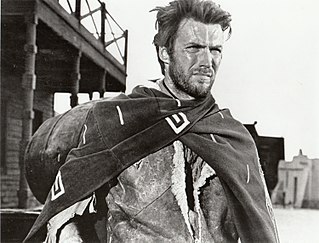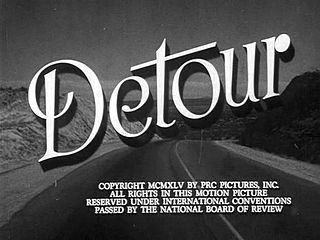
Hindi cinema, popularly known as Bollywood and formerly as Bombay cinema, refers to the film industry based in Mumbai, engaged in production of motion pictures in Hindi language. The popular term Bollywood, is a portmanteau of "Bombay" and "Hollywood". The industry is a part of the larger Indian cinema, which also includes South Indian cinema and other smaller film industries.

A cult film or cult movie, also commonly referred to as a cult classic, is a film that has acquired a cult following. Cult films are known for their dedicated, passionate fanbase which forms an elaborate subculture, members of which engage in repeated viewings, dialogue-quoting, and audience participation. Inclusive definitions allow for major studio productions, especially box-office bombs, while exclusive definitions focus more on obscure, transgressive films shunned by the mainstream. The difficulty in defining the term and subjectivity of what qualifies as a cult film mirror classificatory disputes about art. The term cult film itself was first used in the 1970s to describe the culture that surrounded underground films and midnight movies, though cult was in common use in film analysis for decades prior to that.

A film genre is a stylistic or thematic category for motion pictures based on similarities either in the narrative elements, aesthetic approach, or the emotional response to the film.

The Golden Turkey Awards is a 1980 book by film critic Michael Medved and his brother Harry.

Natural Born Killers is a 1994 American crime film directed by Oliver Stone and starring Woody Harrelson, Juliette Lewis, Robert Downey Jr., Tommy Lee Jones, and Tom Sizemore. The film tells the story of two victims of traumatic childhoods who become lovers and mass murderers, and are irresponsibly glorified by the mass media.

Michael Saul Medved is an American radio show host, author, political commentator, and film critic. His talk show, The Michael Medved Show, is syndicated from his home station KTTH in Seattle. It is syndicated via Genesis Communications Network.

The cinema of Hong Kong is one of the three major threads in the history of Chinese language cinema, alongside the cinema of China and the cinema of Taiwan. As a former British colony, Hong Kong had a greater degree of political and economic freedom than mainland China and Taiwan, and developed into a filmmaking hub for the Chinese-speaking world.

An exploitation film is a film that tries to succeed financially by exploiting current trends, niche genres, or lurid content. Exploitation films are generally low-quality "B movies", though some set trends, attract critical attention, become historically important, and even gain a cult following.
The New Hollywood, also known as American New Wave or Hollywood Renaissance, was a movement in American film history from the mid-1960s to the early 1980s, when a new generation of young filmmakers came to prominence. They influenced the types of film produced, their production and marketing, and the way major studios approached filmmaking. In New Hollywood films, the film director, rather than the studio, took on a key authorial role.

A road movie is a film genre in which the main characters leave home on a road trip, typically altering the perspective from their everyday lives. Road movies often depict travel in the hinterlands, with the films exploring the theme of alienation and examining the tensions and issues of the cultural identity of a nation or historical period; this is all often enmeshed in a mood of actual or potential menace, lawlessness, and violence, a "distinctly existential air" and is populated by restless, "frustrated, often desperate characters". The setting includes not just the close confines of the car as it moves on highways and roads, but also booths in diners and rooms in roadside motels, all of which helps to create intimacy and tension between the characters. Road movies tend to focus on the theme of masculinity, some type of rebellion, car culture, and self-discovery. The core theme of road movies is "rebellion against conservative social norms".

Mormon cinema usually refers to films with themes relevant to members of the Church of Jesus Christ of Latter-day Saints. The term has also been used to refer to films that do not necessarily reflect Mormon themes but have been made by Mormon filmmakers. Films within the realm of Mormon cinema may be distinguished from institutional films produced by the LDS Church, such as Legacy and Testaments, which are made for instructional or proselyting purposes and are non-commercial. Mormon cinema is produced mainly for the purposes of entertainment and potential financial success.
Hong Kong action cinema is the principal source of the Hong Kong film industry's global fame. Action films from Hong Kong have roots in Chinese and Hong Kong cultures including Chinese opera, storytelling and aesthetic traditions, which Hong Kong filmmakers combined with elements from Hollywood and Japanese cinema along with new action choreography and filmmaking techniques, to create a culturally distinctive form that went on to have wide transcultural appeal. In turn, Hollywood action films have been heavily influenced by Hong Kong genre conventions, from the 1970s onwards.

The Fifty Worst Films of All Time (and How They Got That Way) is a 1978 book by Harry Medved with Randy Dreyfuss. Despite its broad title, it presents the authors' choices for the 50 worst sound films made or distributed in the United States. Each film's entry includes a story synopsis, the authors' opinions of its quality, and a selection of contemporary reviews of the film.
The Australian New Wave was an era of resurgence in worldwide popularity of Australian cinema, particularly in the United States. It began in the early 1970s and lasted until the mid-late 1980s. The era also marked the emergence of Ozploitation, a film genre characterised by the exploitation of colloquial Australian culture.

Wheeler Winston Dixon is an American filmmaker and scholar. He is an expert on film history, theory and criticism. His scholarship has particular emphasis on François Truffaut, Jean-Luc Godard, American experimental cinema and horror films. He has written extensively on numerous aspects of film, including his books A Short History of Film and A History of Horror. From 1999 through the end of 2014, he was co-editor, along with Gwendolyn Audrey Foster, of the Quarterly Review of Film and Video. He is regarded as a top reviewer of films. In addition, he is notable as an experimental American filmmaker with films made over several decades, and the Museum of Modern Art exhibited his works in 2003. He taught at Rutgers University, The New School in New York, the University of Amsterdam in the Netherlands, and as of May 2020, is the James E. Ryan professor emeritus of film studies at the University of Nebraska in Lincoln.
Metacinema, also meta-cinema, is a mode of filmmaking in which the film informs the audience that they are watching a work of fiction. Metacinema often references its own production, working against narrative conventions that aim to maintain the audience's suspension of disbelief. Elements of metacinema includes scenes where characters discuss the making of the film or where production equipment and facilities are shown. It is analogous to metafiction in literature.
Film criticism is the analysis and evaluation of films and the film medium. In general, film criticism can be divided into two categories: journalistic criticism that appears regularly in newspapers, magazines and other popular mass-media outlets; and academic criticism by film scholars who are informed by film theory and are published in academic journals. Academic film criticism rarely takes the form of a review; instead it is more likely to analyse the film and its place in the history of its genre or in the whole of film history.
During World War II, the entertainment industry changed to help the war effort. Often the industry became more closely controlled by national governments, who believed that a supportive home front was crucial to victory. Through regulation and censorship, governments sought to keep spirits high and to depict the war in a positive light. They also found new ways to use entertainment media to keep citizens informed.

Nollywood, a portmanteau of Nigeria and Hollywood, is a sobriquet that originally referred to the Nigerian film industry. The origin of the term dates back to the early 2000s, traced to an article in The New York Times. Due to the history of evolving meanings and contexts, there is no clear or agreed-upon definition for the term, which has made it a subject of several controversies.













